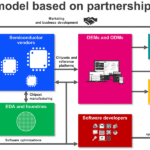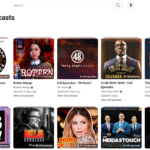Introduction: A New Retirement Reality
Retirement in 2025 no longer means relying solely on Social Security and savings. With rising costs, longer life spans, and market unpredictability, retirees are embracing diversified income strategies for financial stability and purpose. According to Investopedia, a whopping 76% of retirees now plan to earn additional income through part-time work, rentals, investments, or passive channels
Financial advisors are shifting—recommending multi-bucket portfolios featuring guaranteed lifelines (annuities, Social Security) and flexible side gigs to hedge volatility Let’s break down the most effective ways retirees are building multiple income streams today.
1. Guaranteed Income: Core Stability
📌 Social Security & Pensions
These remain foundational. Maxing out benefits—by delaying claims until age 70—can increase monthly payouts by ~8% annually And while defined-benefit pensions are rarer, those fortunate enough to hold them enjoy steady, lifelong income.
📌 Annuities
Modern annuities offer inflation-adjusted, guaranteed dough. Kiplinger shows combining annuities with bucket strategies can smooth volatility while protecting essential spending
2. Investment-Based Income: Passive and Purposeful
🔁 Dividend Stocks & Income Funds
Generous blue-chip dividends (e.g., Johnson & Johnson, Coca-Cola) have proven to be stable income generators. Retirees often resort to diversified dividend ETFs to reduce individual stock risk
🏠 REITs & Real Estate Income
REITs offer easy access to real estate returns without management headaches and benefit from tax pass-throughs. Direct property rental also remains lucrative, as retirees rent ADUs, spare rooms, or vacation properties via Airbnb/VRBO .
🏗️ Crowdfunded/Platform Real Estate
Crowdfunding channels give retirees access to institutional-grade properties, producing average returns of 8–12% per annum—blending income and diversification
💵 Bonds & TIPS
Retirees build bond ladders with Treasuries (even two-year notes above 5%) or inflation-protected TIPS to preserve purchasing power and generate reliable income
3. Private Credit & Peer-to-Peer Lending
Peer-to-peer lending platforms offer retirees yields above traditional fixed income (6–10%), allowing them to diversify into private credit These must be approached cautiously, but they can supplement income across broader portfolios.
4. Royalties & Licensing
Retirees with intellectual property—books, music, patents—are turning those assets into cash flow. Royalties can be structured into licensing deals, securitized, or sold to institutional investors—adding tax-advantaged, ongoing income .
5. Online Businesses & Digital Products
Digital platforms offer a low-barrier way to monetize knowledge or hobbies:
- E‑books, blogs, online courses: One-time efforts can deliver passive revenue via royalties or affiliate income
- E-commerce, print-on-demand, and affiliate sites create scalable income with minimal overhead .
- Digital products or templates earn passive income once they’re listed online.
6. Part-Time, Consulting & Gig Economy
Maintaining mental agility and supplemental income, many retiree professionals:
- Offer consulting or freelance services in familiar fields like HR, finance, or tech. Platforms like LinkedIn, Upwork, and Clarity.fm facilitate this transition
- Take on part-time gigs—rideshare driving, pet care, furniture assembly—offering flexible earnings and community engagement. Some retirees earn $4,000+/month doing side gigs like furniture assembly on TaskRabbit or luxury rideshare driving
7. Home Equity & Lending
Leveraging housing equity helps diversify income:
- Reverse mortgages let retirees tap equity without monthly payments—but must be used cautiously
- Home equity lines (HELOCs) offer low-cost liquidity.
- Equipment leasing or revenue-sharing provide returns from business income or equipment use .
8. Life Insurance & Structured Income Products
Permanent life policies with cash-value components or structured income insurance products can be tapped for loans or withdrawals—offering flexible cash flow that’s often tax-advantaged .
9. Tax Advantages & Strategic Integration
Retirees are optimizing income streams for tax efficiency:
- Qualified dividends and capital gain rates.
- Tax pass-throughs in REITs and LICs.
- Deductions through real estate depreciation.
- Planning Roth conversions to align income timing with new tax thresholds ($6,000 deduction for those 65+ through 2028)
10. Hybrid “Bucket” & Lifestyle Alignment Strategies
Financial advisors now pair strategic income buckets with purposeful living:
- A “safe bucket” keeps 1–3 years of living expenses in liquid, low-risk vehicles (annuity/HYSA) to protect against withdrawal sequencing
- Growth and income buckets leverage dividends, rentals, and private credit for long-term wealth.
- Lifestyle buckets include income from side gigs, consulting, hobbies—driving both money and engagement .
🧠菜️ Case Study: The Multi‑Income Retiree
Meet Linda (70):
- Social Security + Annuity: $30,000/year
- Dividend portfolio: $15,000 (via diversified dividend ETF)
- Rental income from 2 ADUs: $24,000
- Online course sales: $6,000/year passive
- Consulting & tutoring: $12,000/year part-time
Total income = $87,000 annually, with diversification across guaranteed, passive, and active sources. Her financial advisor helps manage tax-efficient withdrawals, while she stays socially connected and intellectually active through work and teaching.
⚠️ Risks & Considerations
| Category | Risks to Consider |
|---|---|
| Early withdrawal penalties or fees from annuities / reverse mortgages | |
| Market volatility in stocks, congregated rental markets | |
| Interest-rate exposure in bonds and loans | |
| Platform risk in P2P or crowdfunding | |
| Regulatory/legal changes affecting side gigs or rentals | |
| Complexity in managing multiple streams |
Diversification, a trusted advisor, phased implementation, and flexible strategy adjustments help balance these risks.
✅ Final Thoughts
Retirement in 2025 isn’t about idleness—it’s about purposeful, diversified income. Smart retirees combine:
- Stable sources (Social Security, annuities)
- Investment income (dividends, real estate, bonds)
- Alternative income (P2P lending, royalties, digital products)
- Purposeful work (consulting, gig economy)


